Ruandy is a photographer and videographer. If he had to pick a label he’d say he is an action sports/portrait photographer. Action sports are his favorite followed closely by portraits. He loves being capable of shooting anywhere with minimal gear. Desert, forest, street, studio or a tiny room he would look at any location as a challenge. He thinks that is what makes photography fun for him.
Words and images by Ruandy Albisurez
My photography adventure was in Guatemala. I flew from Los Angeles into Guatemala City from Aug. 28 - Sep. 10, 2019. My adventure was one part of working on a personal photo project and one part visiting family. My parents live just outside of Guatemala City and much of my family still reside there.
The trip was important to me because I had not been back to visit in around 15 years and the photo project I am working on is important to me as well. I want to shed some light on the action sports community in Central and South America for people in North America. I don’t feel they get enough attention aside from the occasional travel write up or video I see in digital magazines that don’t put any focus on the locals growing the scene, building parks, running shops and organizing events. And all of that is a lot tougher to accomplish in a third world country. There are many talented athletes that come from very poor backgrounds that I think could change their lives around with the right exposure. So part of my project is hoping that I can help open up some doors for some of these athletes and get them some well-deserved exposure. I flew down as a one-man show to see what I can capture and share with people.
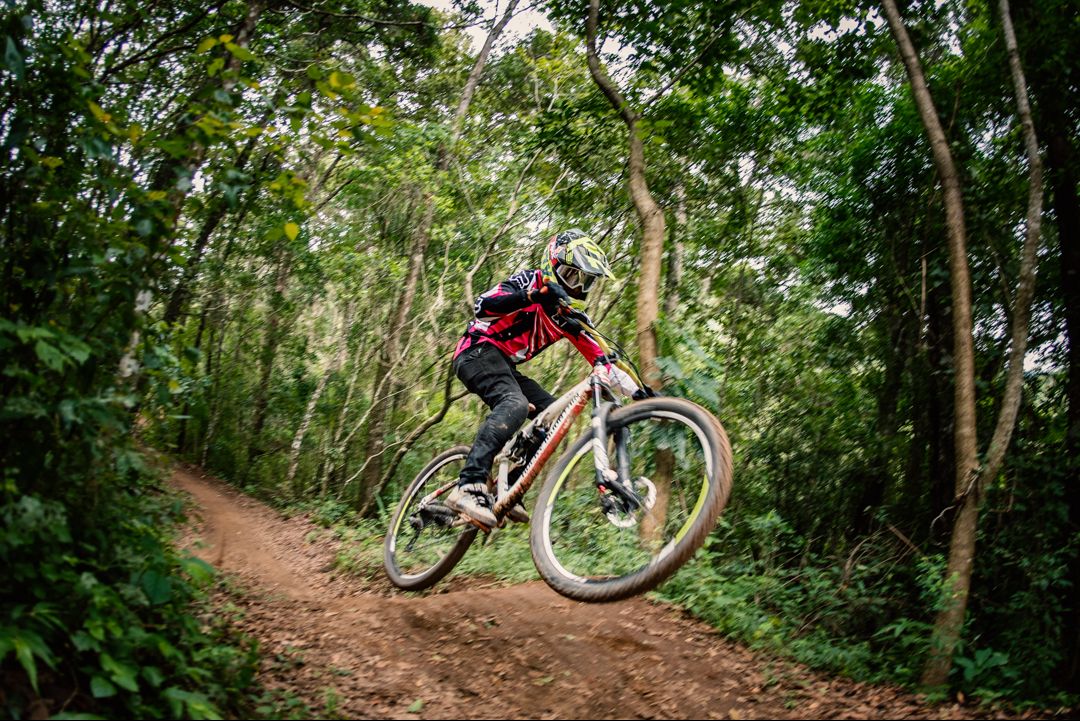
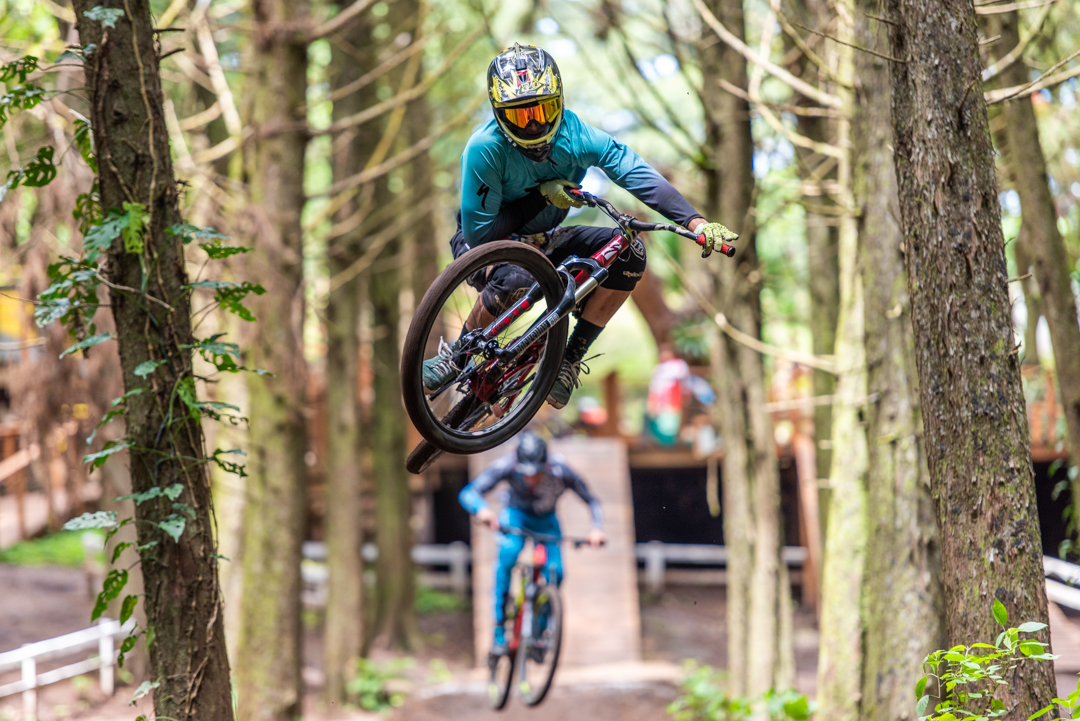

The biggest challenge I was going to face was finding some local action sports athletes to hang out, get to know and shoot with. I began doing searches on social media to find athletes with content that showed some promise in front of the lens. I reached out to many and only heard back from a few but that was definitely enough to get my foot in the door and meet other athletes as well. Being where we were, there are not very many chances to get shot by a sports photographer for a lot of these riders. All in all, we were all having a blast. For myself, it was hanging out with these young guys and getting to know them and learn a little about their scene. And for them, it was the rush of doing the same trick on repeat until we’d knock out a good shot and we would all be stoked with the results.

The best moments of the trip were hearing about how the local bike community is growing and how they’re all coming together to get this park slowly built up. They are all busy working on ways to come up with the resources to accomplish their goal. They still continue to build when they can and little by little have been growing this small line of jumps you see in the images. This is a small section of the park that they were granted access to in the small town of Fraijanes. Their dedication shows and it is a healthy outlet for them that keeps them out of trouble. In time I hope to be able to work on some kind of program to possibly get a little bit of aid down to these guys and help them get their park completed sooner than later. It would be a great place for younger kids to have a place to get into the sport. Outside of the riders, I shot some images of the countryside, a local mountain bike park, and the people. In Antigua, I donated some time to a local foundation Ninos de Guatemala and photographed some of the students to help them use those images to get some new sponsors. Overall I had a great time and experience.

Tips I can offer for traveling and photography are just to know what the minimum gear that you need for the images you are trying to create, and have a good way to transport it all and keep it safe. My Ajna was perfect for the trip. I was confident I wouldn’t have to check the bag and if by some chance I did I was confident about pulling the large ICU out and throwing it under the seat in front of me like a worst-case scenario. Knowing that I have that option brought me lots of peace of mind as far as my gear. Honestly, I had no problem fitting my Ajna into the overheads on its side.

You can find Ruandy's work on his Instagram and Website.
"We Are f-stop" is for all f-stop users to share their stories from the field, from small daily adventures to epic travels. Contact us with your story on Facebook or drop us an email to [email protected] and let us know where your photography takes you and your f-stop pack!
SHOP ALL GEAR MORE WE ARE f-stop


©2022 F-stop
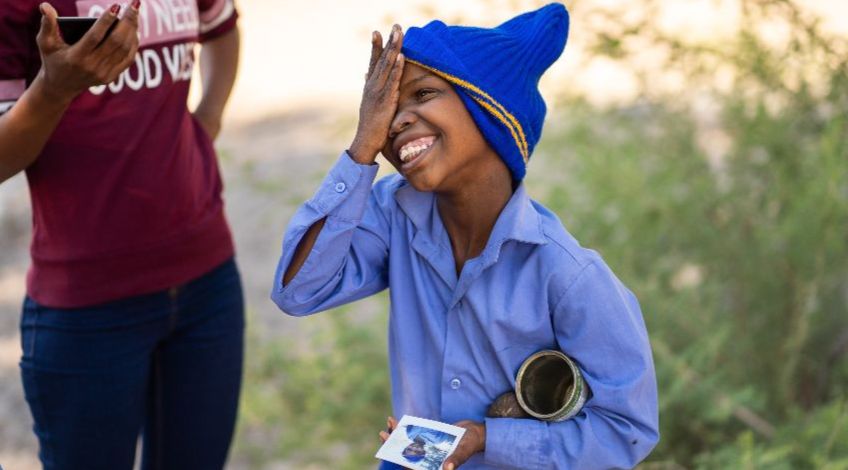
Working in the industry for over 10 years, Emily switched gears and entered the academic world as an assistant professor of Digital Media at Utah Valley University. She’s hoping to inspire the next generation of Digital Media students with her escapades. When she’s not in the classroom, she’s plotting and planning new projects and expeditions that continue to take her around the world. Emily has been able to combine her love of video and photography with travel and in 2018 she finished her personal goal of visiting all seven continents. You can follow her on Instagram @highlandhedrick or the Instant Portrait Project @instantportraitproject
Words and images by Emily Hedrick

Cameras and lenses. Check. Extra batteries. Check, check. Instant film camera. Check?
I had no idea that a last minute addition to our gear list would launch in to a new and exciting side project. I’m a professor at Utah Valley University in the Digital Media Department. I had just finished my first year of teaching full time at my alma mater when I was preparing to take a small group of students to Namibia, Africa to work on The Untold: Namibian Women’s Stories Project.
The Untold Project is a three-year endeavor to capture women’s stories from all twelve ethnic groups in Namibia. There has never been a comprehensive research project about Namibian women by women. My mentor professor Mike Harper began the collaboration project in 2017 with journalism professor Emily Brown from the Namibia University of Science and Technology (NUST). I took over the Utah Valley University (UVU) side from Mike for the last two years of the project. The NUST team will be conducting the interviews, while UVU is capturing the stories.
As our UVU team began organizing our gear for the interviews, our f-stop Loka UL and Ajna packs had to contain our individual mobile studios. We had to pack lightly but efficiently to make sure we capture the quality we needed. We brought Sony A7III’s and an A6400 with all the accompanying lenses, batteries, filters, and accessories. A last minute addition was the FujiFilm SQ6 Instax camera, which was definitely the oddball of the group!

Lotus carrying all the essentials in the ghost town of Kolmanskop
Located on the Atlantic coast and was once a part of South Africa, Namibia is a desert country that houses both the Namib with its giant sand dunes and the dry Kalahari. The landscapes are surreal and sparse with an occasional oryx or giraffe roaming the bush.
Interviews with the women didn’t begin for another week which afforded us an opportunity to travel to various sites around the country. As a group of budding photographers we decided to go to the ghost town of Kolmanskop near Luderitz. We were also in some of the best dark sky country in the world and we couldn’t pass up an opportunity to drive out to the Quiver Tree Forest and photograph the Milky Way.

Night sky at the Quiver Tree Forest with light pollution from nearby Keetmanshoop.
The following week the team traveled west to the coastal town of Swakopmund, we had planned to do interviews in an informal settlement on the outskirts of town. An informal settlement is essentially a squatter’s camp. The houses were all part of a network of corrugated metal huts with outhouses and water spigots on each block. It’s an alarmingly high concentration of people in impoverished conditions.
When the NUST van pulled in and the team piled out, our presence generated a lot of interest by the community. As an icebreaker, Emily Brown suggested that I take a picture of one of the mothers. When I handed her the photo, she gave me an expression that seemed to say, “Okay why did you give me a blank white piece of plastic paper?” I didn’t speak Afrikaans and trying to explain with hand gestures that an image will appear didn’t translate, but it did buy me time as her image magically appeared. And that’s what it was: magic.
Soon other mothers wanted photos of their babies and children. Snap, snap. More kids came from out of nowhere to get their photos taken too. Picture snap after picture snap. I had only brought 10 packs of film (or 100 instant film exposures) to last the entire trip. I thought 100 exposures would be plenty of film for the three-week trip. Oh, how wrong I was!

Swakopmund children and their photos. (Photo: Brandon Leavitt)
Everyone held their photos gently; they treasured the image and protected it from the dust. When I spoke to Emily Brown about it later, she said that many of these kids will never have a physical photo of themselves in their childhood. For them, a photo is a luxury item. In an age of digital abundance and selfie-taking in America, for these children and youth, an instant photo isn’t a novelty, it’s a precious keepsake.
Our next set of interviews took us to the eastern border near Botswana to meet with the San people: a kind, beautiful ethnic group that has unfortunately been marginalized in Namibia. We had traveled to another settlement near the town of Tsumkwe. Breaking the ice once more, I pulled out the Instax camera. Again, confusion and disappointment when I took the first (seemingly blank) image! That is until…

A portrait being revealed. (Photo by: Brandon Leavitt)
Soon the colors began to appear, and the image of the San mother developed before their eyes. Smiles erupted as the instant film worked its magic and created a small portrait. Soon there was a line of mothers and children all wanting their photos to be taken too. Cartridge after cartridge I snapped away at the growing congregation of adults and children.
Me (Emily Hedrick) handing out photos. (Photo by: Kellie Leavitt)
The most heartwarming moment was when the matriarch of the settlement was being interviewed and she asked if she could get her photo taken. I wanted to take her photo before because of the beautiful vibrant colors that she was wearing, but I couldn’t understand her native click language. When she asked for a photo I was able to take the last cartridge of film out and take her photo. But not before I accidentally bumped the button and took a picture of my shoes. Ugh, 8 photos left!

Matriarch and her portrait.
The matriarch had poor eyesight, but as the photo developed, her portrait ended up being the most vibrant one. The film clearly showed off the colors of her headwear and clothing. Hidden beneath her sash was a little satchel where she carried her most important valuables. Everything was inside her satchel was in pristine condition: ID card, wallet, and other mementos neatly stored inside and never brandished in the dusty settlement. After showing off her own photo, she tucked it carefully away into her satchel and gently hid it back away in her sash.
Emily Brown leaned over to me as the matriarch was putting away her photo, “This is something she will hold on to for the rest of her life.” A photo. A simple instant photo was the best tangible gift we could give. It was in that moment that I knew I had to do something much, much more.

Little boy and his portrait. (Photo by: Brandon Leavitt)
After we wrapped up our interviews and made our way back home to Utah, there was still so much work on the Women’s Project we had to do, but I couldn’t shake this idea about doing more instant film portraits for people. There is no shortage of international projects our university is doing and this idea could expand it to many more areas around the world. I had to do something.
I began working with UVU on extending the project to the community. UVU was 100% supportive on setting up a crowdsourced webpage letting anyone donate to the newly created Instant Portrait Project through UVU’s website. The project launched on September 6th and all proceeds will go towards buying a second camera and as much instant film we can carry with us. I think I’ll be upgrading to the Ajna backpack to get 8 more liters of space for instant film!

Photo by: Kellie Leavitt
The Instant Portrait Project is there to give a record of a moment in time in a person’s life. It is a keepsake that can be held on for many years to come.
We aim to raise $500 to get us started and plan to do subsequent fundraising as the project expands to other areas around the world.
"We Are f-stop" is for all f-stop users to share their stories from the field, from small daily adventures to epic travels. Contact us with your story on Facebook or drop us an email to [email protected] and let us know where your photography takes you and your f-stop pack!
SHOP ALL GEAR MORE WE ARE f-stop


©2022 F-stop
Peter van Heulen was born in Vlissingen, The Netherlands. At age sixteen he decided to study photography and mechanical engineering. His work has taken him all over the world and he has carried his camera along the way.
Zeeland is the inspiration for many of Peter’s photos. The more Peter travels around meeting people and learning about different cultures, the more he focuses on human interest stories. His work has gained permanent places in hotels, restaurants, offices, and private homes around the world. Besides photography, he writes and publishes books about photography. His latest book is about learning to shoot glamour photography.
Over the last five years he has explored the unbeaten paths on the island of Sulawesi in Indonesia. His goal is to show the world the beauty of tribes and cultures in Indonesia.
Words and Images by Peter van Heulen

Two years ago, my wife, Desiree van Heulen, and I had the opportunity to go to Indonesia together. When we traveled to Kendari, Sulawesi in the beautiful southeastern part of Indonesia in 2016 we found a place where time seems to have stood still. It’s as if we had taken a time machine twenty years back into the past.
People live in harmony and honor the old traditions and are proud to show it. It is a photographer’s paradise. If you like cultures and tribes, come to Indonesia. I found a fishing tribe called the Bayo who have lived for ages in their houses on the ocean. This way of living is so special that I felt the need to find a way to show it to the world. In 2018 I visited the village again, this time for more than a half year.

Preparing for living a half year in the tropics is almost the same as preparing for a summit climb. You need to think about the risks, the money, the right equipment, and personal belongings. It’s a challenge to fit everything you need into one backpack. Lucky, when I was in my twenties, I did a lot of rock climbing and hiking in the Alps, so traveling light is not new for me.
Another challenge is the language. All tribes have their own dialect and I cannot speak any of them. Google translate helps, but 80% of the Bayo people cannot read. We say in Dutch, met handen en voeten werkkomen we er wel, with our hands and feet we manage to communicate.

For the tropical climate you also need warm clothes and a good rain cover for you and the backpack. I learned from my last trip in the mountains in Sulawesi that it is handy to have socks, trousers, and a warm jacket. When sudden thunderstorms and heavy rains come, the temperature can drop from 34 to 20 degrees Celsius. Believe me, it gets cold.
Flying with your gear can be challenging. At every security check I was picked out of the line, maybe because my f-stop Ajna photo backpack is orange and attractive. I’ve accepted that I travel with suspicious-looking equipment in my backpack. So, I make sure I am on time getting to the airport.

Remember to put your tripod in the suitcase and any lithium-ion batteries in your carry-on luggage. Something else that is important to remember is to charge laptops and tablets before traveling. Not only will they be ready when you have a security check, they are nice to have when you have a delay and time to kill.

Packing is always a challenge. My suitcase is no problem since all my heavy stuff fits in there. I put as much gear as possible in my f-stop backpack. I always take two backpacks with me: the Ajna as a carry-on and the Guru UL in my suitcase for small trips and low-profile shooting. The Ajna is perfect for my needs.

All my gear I try to fit in a f-stop Pro ICU - Large, such as my Fujifilm camera and lenses, filters, batteries, and my Elinchrom ELB 400 with lamp heads and spare battery. All other small items I put in a sleeve on top of the ICU, together with some small reflectors. My tripod is a Gitzo I altered to also use as a light stand for my flash. On the outside of the Ajna I put my normal tripod, my soft box, and an extra small lampstand. I put my valuables in the inside zippered pocket. And last, but not least, I attach my house key to the special keychain in the backpack.

My adventure started in Kendari, Sulawesi in November 2018. After a few weeks of acclimatization, I was up to the challenge. This time I brought my friend Rahmad Ladae with me. He is a brilliant video maker. Together we have had many adventures; some bad, but most of them were fun. Most importantly when working together is to rely on each other. I took my motorbike, put on all my gear, and went for a two-hour drive through the jungle to Bayo Village, near the city of Kendari. This is where my real adventure started. I was going to do an in-depth story about a tribe that has lived for ages on, and with, the ocean.

I am a tall Caucasian with blue eyes and grey hair and have an orange backpack. I definitely stood out since most of the people had never someone like me before. For the first few days I only walked around making pictures of the children playing in the little village. Once you earn the trust of the kids, the parents get curious and invite you to come into their homes. The houses on the water are built from wood and walk boards connect all the houses with each other.

In the village people wake up half an hour before sunrise, which is one of the best times to make pictures, such as of fishermen going out with their little canoes to the ocean to catch fish.
Women, children, and older people stay in the village. There is no drinking water, so every morning women walk to the mountains to get fresh water for cooking and drinking.
Every morning the children jump in the water to wash and play. The women start to wash the clothes and cook after that they take a shower and take care of the kids. There are no showers with hot water, they use a little bucket called a mandi to shower. While the village wakes, salesmen come on their scooters to the village to bring rice, vegetables, fruits, and household items.


I had a great opportunity to stay a few days in a house of an older woman who lost her husband at sea and her only son cannot fish because his right leg was injured while fishing with dynamite. It is a pity they still use this method since it kills the coral and flora and fauna in the ocean. The villagers grow up in the village and rarely go to other places. The majority of the older people cannot read or write and never went to school.

The best opportunity to make pictures is in the early morning and in the evening, as the sun is going down. In the morning you need to act quickly because the sun rises very fast and in one hour it’s already too harsh to make good pictures. In the night you can make perfect night-sky pictures. Since there is no light pollution, the sky is full of bright stars and planets. Sometimes the Milky Way is so bright that it seems unreal.

Working in the tropics is a real challenge, not only for me as a photographer but also for the gear. In the tropics, the performed well. The Ajna is perfect for hiking trips and also for traveling with a motorbike. You can lower the back straps, so the bottom of the pack sits on the buddy seat of the motorbike. In my ICU I use small Velcro pieces to hold the lenses and other small things in place. The ICU is one of the best inventions from f-stop. They are easy and fast to get gear in and out of. Before putting the ICU in the backpack, make sure to zip open the cover and fold it to the bottom side, so it becomes an extra soft pouch for the back of the ICU. Slide the ICU into place, and you are ready to go on an adventure.
I love the color of the backpack, first of all it’s the national color of my home country. It is also easy find it with this bright color, even in the night. Sometimes when I do night-sky photography, I put some reflecting material on the outside, so it is easier to find my pack when it’s totally dark.
With this series of pictures, you get a good idea of the daily life in the fishing village. We had a great time there and after six months in Indonesia I needed to go. I have the feeling my work is just starting here though. So, my next journey is set for October 2020, to finish the job. But, it is never really finished.
"We Are f-stop" is for all f-stop users to share their stories from the field, from small daily adventures to epic travels. Contact us with your story on Facebook or drop us an email to [email protected] and let us know where your photography takes you and your f-stop pack!
SHOP ALL GEAR MORE WE ARE f-stop


©2022 F-stop

The Trans BC Enduro race has been called one of the hardest races in mountain biking, with competitors completing six grueling days of riding the toughest trails through the Southwest Kootenays of British Columbia. Filmmaker and f-stop user Ben Saheb is Director of Photography at Steamboat Powdercats in the winter. When the green season rolls around, he travels north every year to Canada, and the world-class mountain bike trails of BC. This We Are f-stop is Ben's insight on filming this crazy race with seven other talented media professionals from around the world...
Words, images and video by Ben Saheb / TransBC Media Team
Trans BC Media Team from Ben Saheb on Vimeo.
Deep in the heart of the Canadian Rockies lies a world-renowned mountain bike race called the Trans BC Enduro. Famous for its world class scenic views and incredible mountain biking destinations, the Trans BC race is also famous for the media team that chases and documents all the action. The same crew has been doing it since this race began in 2016 and Its no coincidence that all of these folks unanimously use the f-stop backpack system to do what they do.


One of the biggest challenges shooting this race is the extended amount of time spent in the backcountry and the relentless abuse that environment puts on your body and gear. On any particular day, its common to see endless rain, constantly dusty conditions to very jostling technical mountain biking. “All of these environments are so hostile to photography gear that they would make any studio photographer cringe” says Ben. “Having the f-stop system however makes these harsh conditions easy to manage with the dozens of ways we can organize and reconfigure the packs.”

The Tilopa and Ajna are the most popular packs among the media team because these packs can easily carry camera gear, medical equipment, extra clothes, food, water and even trail beer in a safe organized fashion. “There’s also a little extra room in there for a random last minute item like an extra lens, a tripod or even a costume.
In the end, what keeps the same media crew coming back to Trans BC every year is getting to be part of an amazing team of talented camera geeks. “If we were out there alone covering this race the grueling hours and challenging conditions would beat us down. But getting to work together to motivate, heckle and learn from one another makes shooting Trans BC one of the most memorable trips of the entire year.”


"We Are f-stop" is for all f-stop users to share their stories from the field, from small daily adventures to epic travels. Contact us with your story on Facebook or drop us an email to [email protected] and let us know where your photography takes you and your f-stop pack!
SHOP ALL GEAR MORE WE ARE f-stop


©2022 F-stop
Piotrek Deska is an outdoor photographer from Poland.
The whole thing started with climbing when he was 15. He also got his first camera somewhere around this age, and it was only a matter of time till those two passions would combine. Now he’s working with companies such as 8a.pl, La Sportiva, and Black Diamond. He has been published in magazines around the world, including Rock & Ice, Klettern, Climbing Magazine, Climax Magazine, National Geographic, Desnivel, and Grimper.
Words and images by Piotrek Deska

A good friend of mine, Lukasz Dudek, is one of the most talented climbers in Poland. He was the first Pole to climb 9a, the first who managed to do an 8C boulder problem, and he has been able to climb on this level for 10 years now. But a couple of years ago his goals got even more ambitious.
Now he’s mostly focused on climbing in the mountains. He has already climbed most of the European classics, including Bellavista, 8c, and the hardest route in Tatra Mountains – Corona, 8c+. After that, he decided to go one step further, and try to climb solo, using a GriGri to belay himself. The first target was a route called Tortour, rated 8c, located on Schartenspitze in the Ybbstal Alps in Austria. On June 14th, 2019 he did it in a first serious push after a few days of searching for the right beta to do every pitch. I felt honored that he asked me to join him in his adventure and be the one to document it.


It’s always hard to compromise the gear you would like to use, and the weight of it when going for a photo shoot in the mountains. You have to remember that there will be a long uphill hike and then you will have to haul everything with you up the ropes. It is important to think about what’s absolutely necessary. As a photographer, my camera equipment is the most important gear. I use a Canon 5D and a selection of lenses. Because I love to shoot using prime lenses, I took a 14mm, 35mm, 85mm, 135mm, and one 24-70 zoom.
But photo gear is not everything you need in the mountains. You also need a harness, leashes, carabiners, ascenders, belay device, rope, helmet, and more. On top of that there are also some essentials, such as an extra jacket, water, more water, and something to eat. And suddenly there’s around 25-30kg of gear you have to take with you. Luckily, the f-stop Ajna paired with the Harney and Navin pouches makes a great combo. I was able to take all that I needed, and it made shooting a much more pleasant experience.

The two most important things in this kind of photo shoot are safety and good frames. Being in a rush is highly inadvisable, especially at the belay stances. There is a lot of climbing gear clipped into the anchors, and it’s easy to get lost in all of it. A bit of inattention and something may fall down. That’s why it’s better to back up the backpack with some extra anchor points.
The other thing is the difficulty of framing. When you’re hanging on a rope it’s quite hard to find the right position to frame, and sometimes it requires a lot of gymnastic moves. But the satisfaction of the results is mostly very rewarding, and you can quickly forget about the struggle.
But the biggest challenge on the wall is time. Getting ready to shoot requires a lot of logistics. You have to prepare the ropes, get in the right position above the climber, make sure everything is secured enough, and then, finally, you can take out the camera. Another thing is the light and weather. On Tortour, the crux pitch is in the middle of the wall and the sun starts to lighten it with very harsh light around 11 a.m. That means that you have to get there very quickly, when it’s still in the shade. Those conditions are much better both for shooting and climbing. Believe me, it’s hard, exacting work, especially with the extra weight and after an approach of a few kilometers.
Luckily, both of us are experienced climbers, so we were moving around in this terrain pretty efficiently. Also, it wasn’t the first time when we were working together, so we know our capabilities very well. It’s important to know what you can expect in the mountains, and what is possible to achieve together. Working with athletes like Lukasz is really great and you can be calm about the results. Besides that, being so high on the wall is also a great adventure itself. The exposure can be intimidating and hours of hanging in the climbing harness can be felt in your legs due to the weaker blood circulation. But most of all it’s a mental game. Hanging with your camera hundreds of meters above the ground on a rope that is as thick as your pinky finger might be too much for most people. But for me it’s something I really love doing! Well, maybe with the exception of changing lenses at those heights. My heart always skips a beat during that process.


To be honest, when we woke up at 4 a.m. to get ready, our psyche wasn’t so great. There was a thick fog everywhere in the valley, and we were pretty sure there was no chance to climb that day. But we decided to start hiking anyway. In the end, we were in the mountains and everything is possible when it comes to weather. It was the biggest relief when we got near the base of the wall. We found ourselves out of the fog and saw this beautiful cloud carpet below.


During jumaring (ascending on the rope) a backpack is not the best solution. The weight of it disrupts the center of the weight and pulls back. So, the best solution is to hang the bag below you. And when it comes to shooting, it’s best, when it’s possible, to stabilize your position with some extra anchor points. It’s easy to get lost in all of those slings and ropes, but it’s definitely the most convenient way to frame what you want.

I shoot mostly rock climbers on a daily basis. But I really love the idea of going back to the mountains. Luckily, Lukasz has the next ambitious goal in his mind, so maybe I will join him again pretty soon.
You can also check out more of my pictures on my website: http://piotrekdeska.com or follow me on Instagram @piotrek_deska



"We Are f-stop" is for all f-stop users to share their stories from the field, from small daily adventures to epic travels. Contact us with your story on Facebook or drop us an email to [email protected] and let us know where your photography takes you and your f-stop pack!
SHOP ALL GEAR MORE WE ARE f-stop


©2022 F-stop

In 2018 the Japanese premium monitor manufacturer EIZO produced the first edition of their tutorial film series “Colourclass” on the Lofoten islands in Norway. In the second edition they traveled in the opposite direction of the globe, explored the beautiful country Namibia and shot eleven tutorial videos. Like 2018, they relied on f-stop gear transporting their extensive equipment.

While the Lofoten series focused on different landscape photography topics, the Namibia series picked out additional subjects: panorama, astro, time-lapse, and wildlife photography – furthermore filming with the mirrorless camera, video post-production and different color management topics like color settings in the camera and software, monitor calibration targets, and also the soft-proof view when printing pictures at an external service provider. And of course, the whole variety of stunning impressions of a wonderful country.
In Namibia Colourclass inventor and organizer Christian Ohlig, Product Marketing Manager Graphics at EIZO Europe, was joined by the Photographer and Trainer Alexander Heinrichs and Director of Photography Stephan Klein who shot the Colourclass Lofoten, too, but this time also acts in front of the camera.
As one might expect, photographers accompanied by a professional film crew has quite a lot of gear to transport to the destination and on location. All the gear had to be taken along by plane together with the crew. Furthermore, the team wanted to be flexible and mobile to preserve the documentary-like character of the episodes. The crew as well as the entire gear had to fit into a single Land-Cruiser with an extended cabin, and the team never stayed longer than two nights at a single location. Hence, flexibility and compactness were crucial on the one hand, but as the team planned to travel more than 2,400 kilometers mainly on dusty gravel roads and working out of open safari vehicles in hot and dusty conditions, protection of the sensible gear was imperative as well.


The central carrying components where the Tilopa and Ajna backpacks, for in-cabin carrying as well as transport on location. Additional ICUs with extra gear where stowed in Zarges aluminum boxes and Peli Cases in the checked baggage. “As we made excellent experiences with our f-stop gear backpacks on our Lofoten production, f-stop gear of course was my first choice for the Colourclass Namibia once again”, elaborates Christian Ohlig from EIZO Europe. “As we knew that we would often have to work in narrow spaces like the seat of a safari car, a hot air balloon or a helicopter where we would not be able to work out of our Tilopa backpacks, we used Florentin shoulder bags for every crew member”, Christian explains his decision.
But the shoulder bags have not only proven their worth in narrow spaces, they were also very useful as additional storage room during the long-distance drives from one location to the other, while being mounted at the backrest of the front seats in the crew car. And, of course, as intended, primarily while shooting in a safari vehicle or just stowed on the floor while flying in the balloon or helicopter.

“The ICU concept was ideal for us”, Stephan Klein, Director of Photography and founder of the film company hunderteins, sums up f-stop’s largest advantage in his eyes. “We had several dedicated ICUs readily packed for different topics like time-lapse, for instance. While not in use, they were stowed in Peli-hard-cases, and we were able to configure our gear quickly for the next shoot or topic without taking the risk of forgetting something by packing from scratch. Furthermore, we did not need to modify our ICU dividers every time – we could just easily and quickly switch the whole ICU while keeping our every-day accessories stowed in our backpacks and shoulder bags”, Stephan explains.


Not only the crew has been challenged in this two-week shooting journey: High temperatures, often more than 40°C, a dust storm and rain while shooting in Etosha National Park, and the omnipresent endless hours on endless gravel roads also challenged the equipment. Not least thanks to the f-stop gear solutions, the EIZO crew’s equipment suffered no hardware damages and was returned safely back to Germany, where they shot the final three episodes of this series in the studio in Bonn and the professional photo lab of WhiteWall.

After months of editing, postproduction and language adaption EIZO has now released the “Colourclass Namibia” globally. Eleven episodes are available in English, German, Italian, Dutch, and Czech language for free here: www.eizo.academy
f-stop gear is proud of having supported this great project and is looking forward to what EIZO is planning in the future.
"We Are f-stop" is for all f-stop users to share their stories from the field, from small daily adventures to epic travels. Contact us with your story on Facebook or drop us an email to [email protected] and let us know where your photography takes you and your f-stop pack!
SHOP ALL GEAR MORE WE ARE f-stop


©2022 F-stop
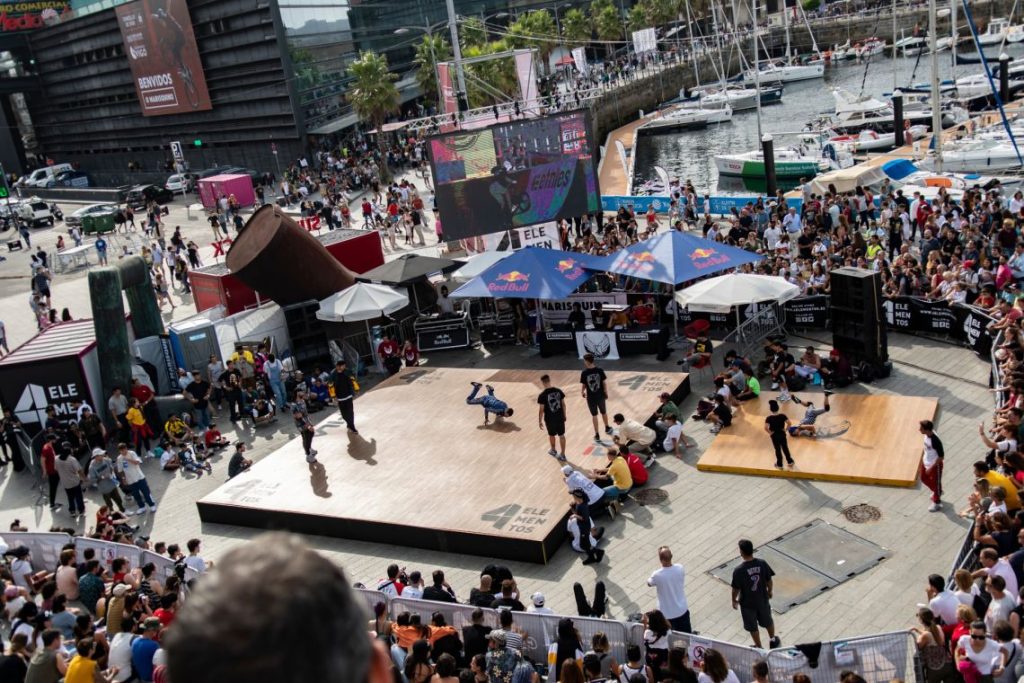
The whole story of Josito Gomez came from a trip to the Philippines, where he went to enjoy a wakeboarding championship, with camera in hand. He made the third best photo of the weekend, which was incredible. Years later he now specializes in extreme sports, especially motorsport. His work can be seen in different specialized magazines, including Scratch Magazine and Motor & Sport and in a wide portfolio of clients, such as, MRW Rally Team, Mavisa Sport, SMC Junior, and pilots.
Words and images by Josito Gomez
One of the most important events in Europe in terms of extreme sports and urban culture is O Marisquiño, which took place in the city of Vigo, Galicia. With the festival marked on the agenda I was eager and excited to attend for the first time. It was important for me to go and be able to photograph other types of sports (of which I am in love) and live the experience of urban culture in its entire splendor.

I was accompanied on this trip by a great friend who was in charge of the video part (made for GoPro Czech Republic). We shared the work, the endless editing hours, and the fatigue, but also the good times. To be able to do what we like, and especially to show it to people, is where one of the greatest personal satisfactions resides. The biggest challenge, not only in this adventure, but in each event I attend and trip I go on, is to be able to get a symbiosis with the people I cross paths with. I try to transmit the moments and the sensations.

The camera is the tool that allows you to break the shyness barrier and get to connect with people through your eyes. It is the way to know places and their people, going from being a typical tourist to someone who is interested in who they are, which leads to constant learning. I would not know how to highlight a specific moment, but if I can communicate what encompasses urban culture and the world of skateboarding, bmx, and graffiti and help people who are disinhibited enjoy and forget for a moment the problems, that is spectacular! And all this accompanied by an authentic Galician cuisine, as well as the authentic food truck located inside the enclosure, especially one of Mexican food! Oh Mama!!!

Whenever one goes to an event, it is advisable to make a checklist of where it will happen. Search sites and access points to estimate how the light can be in different moments. Calculate schedules so that you will be able to go to all parts of the event. In summary, I usually go early so I have the necessary time to see the site that same day and at night prepare for it. All of the above is communicated in a photograph for which I used the following equipment: 2 Nikon D500 cameras, a Nikkor 70-200 f2.8, a Nikkor 17-55 f2.8, a Samyang 8mm, a Sigma 10-20mm f3.5, two flashes, a Manfrotto tripod, a Joby Gorillapod tripod, and a Macbook Air 13”.

For the video shooting we used two GoPro Hero 7 cameras and a GoPro Fusion for 360º footage. All this was packed in the wonderful and fantastic f-stop Ajna backpack, using the Pro ICU - Large, and Laptop Sleeve 13”.

To this day, Josito continues to manage the social networks of some of his clients, in addition to continuing to acquire knowledge. In addition to his fantastic images, one of Josito's virtues is his involvement in, dedication to, and enthusiasm for the world of photography, since it is a passion and a lifestyle.
Connect with Josito:
Website, Instagram, Facebook, Twitter



"We Are f-stop" is for all f-stop users to share their stories from the field, from small daily adventures to epic travels. Contact us with your story on Facebook or drop us an email to [email protected] and let us know where your photography takes you and your f-stop pack!
SHOP ALL GEAR MORE WE ARE f-stop


©2022 F-stop
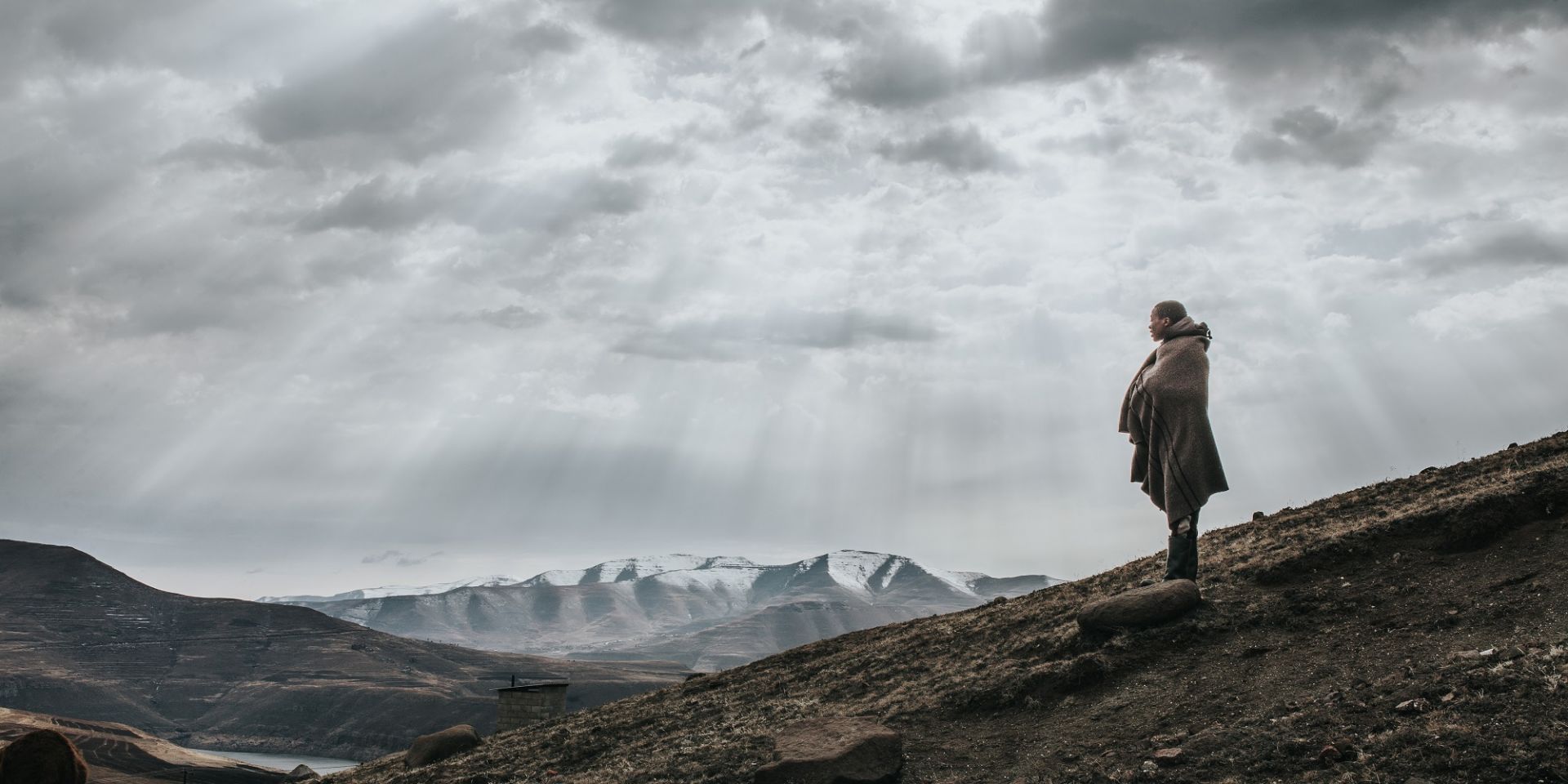
Trey Wallace has been taking pictures since he was a child, but began to delve into professional work about four years ago, shooting the occasional wedding. While volunteering his services to a nonprofit organization, he realized his true passion: humanitarian photography. Take a journey with f-stop customer Trey through Lesotho in Sub-Saharan Africa, where his beautiful images are helping to affect positive change.
Words and photos by Trey Wallace

Images have the power elicit empathy, promote action, and effect change. For the last five years I have worked as a photographer and filmmaker for several organizations in Sub Saharan Africa. Recently, I spent two months in Lesotho capturing images for a Mississippi-based nonprofit organization called The Reclaimed Project, which focuses on job creation and orphan care. This was my first major project with the f-stop Ajna. I loved having it for this adventure because it was spacious enough to carry all my video equipment as well as some survival essentials for long days out on the mountain. Additionally, it felt more than tough enough to take on the rocks, sand, and snow.

I chose to focus on capturing environmental portraits—wide angle shots that allow me to tell my subjects’ stories through their surroundings. Setting is a fundamental part of portraiture, especially when shooting in a landscape as dramatic as the Drakensburg mountains in the Lesotho Highlands. To understand what life is like for the people of Lesotho, you must understand their environment. Lesotho is a formidably rugged land, gashed with sheer canyons and precipices. It was winter during my project, which meant flurries of snow and bitterly cold winds.

For this set of images, I spent the day following a shepherd boy whom I met at the orphan care center. After learning his story, I was determined to share it. Ntene was forced to become a slave shepherd as a young child after being abandoned by his mother. An illness left him deaf and mute at eight years old. In the highlands of Lesotho, there are no special services for children like Ntene. Despite his hardships, he was one of the most cheerful people that I met. His smile was contagious and he loved being photographed. Shortly after my time in Lesotho, I learned that The Reclaimed Project had gone to great lengths to enable Ntene to attend a special needs school in Maseru, where he will learn to read and write.

After putting away the sheep, we went on a short hike around the mountain, where I met several other shepherds.

Lesotho is one of my favorite places to photograph. Many people have never heard of the small country. I love to share the incredible beauty of this hidden nation. Through my images I hoped to capture the resiliency of the Basotho people. Despite some of the harshest landscapes I have encountered, these people thrive. Just like Ntene’s smile, their resiliency is contagious.

You may find more of Trey's work on his web site, Facebook and Instagram.
"We Are f-stop" is for all f-stop users to share their stories from the field, from small daily adventures to epic travels. Contact us with your story on Facebook or drop us an email to [email protected] and let us know where your photography takes you and your f-stop pack!
SHOP ALL GEAR MORE WE ARE f-stop


©2022 F-stop
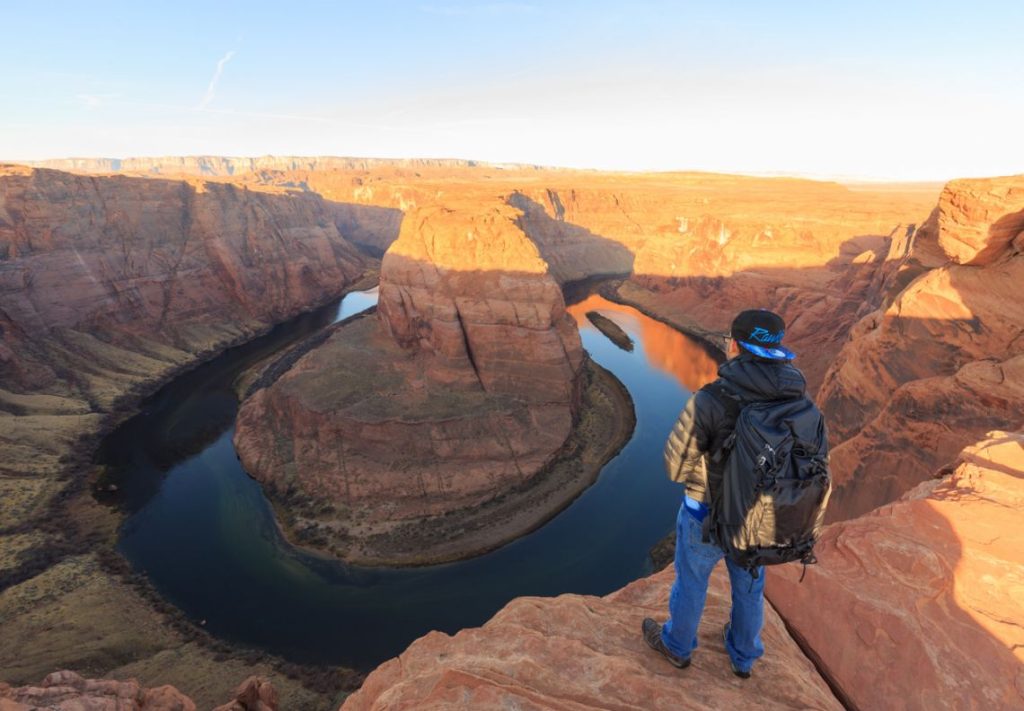
Customer Nelson Perez from South Florida got in touch to let us know how he uses his Ajna. Nelson graduated school as a graphic designer, then realized that he had a growing passion for photography. Working in the airline industry as a ground ops agent opened up the opportunity for discouted travel benefits. Since then, he's been bitten by the travel bug, always with his camera ready to capture each new journey, like this exploration of Arizona:
Words and photos by Nelson Perez
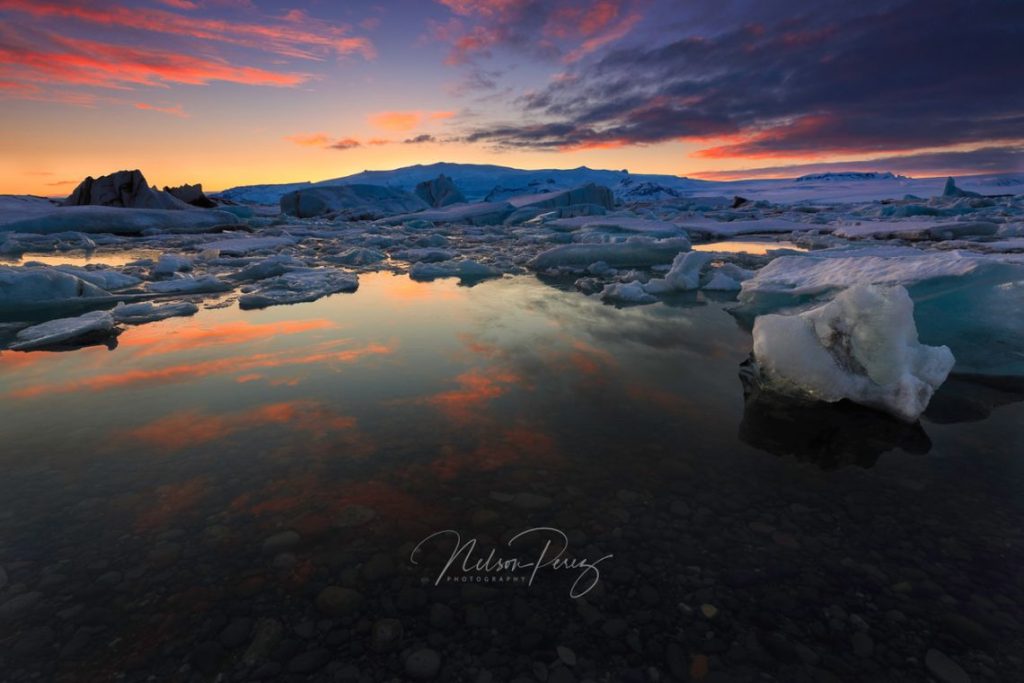
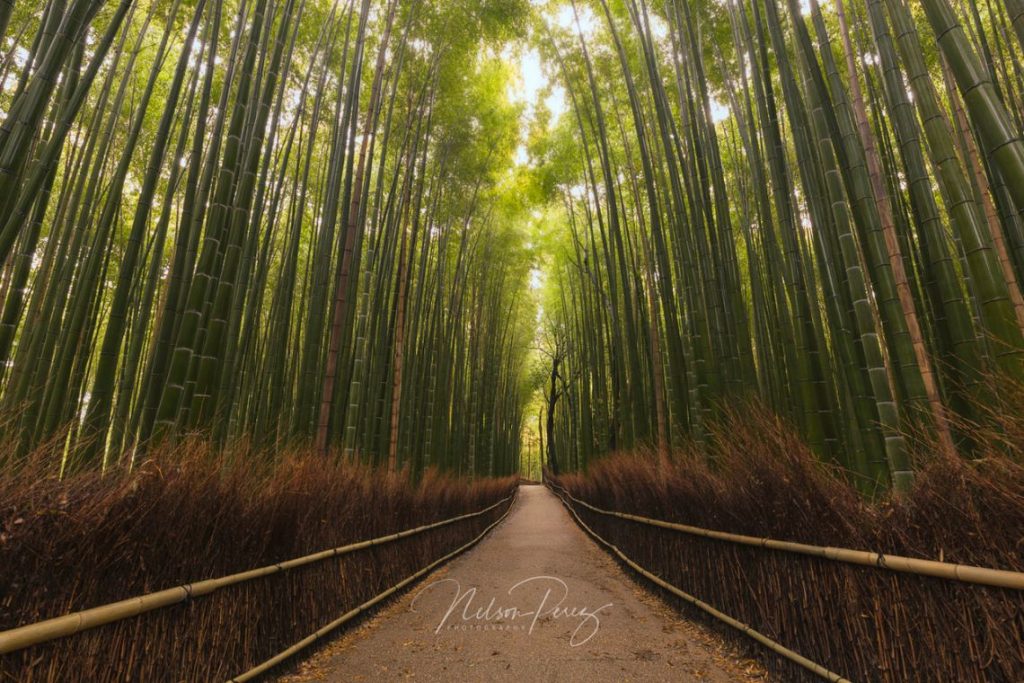
For the last three years, I have journeyed religiously with my wife, Erika, Capturing breathtaking photos nature has to offer. Like any other photographer, I’ve used a variety of camera bags in the past. Recently, I’ve searching for a bag that is both comfortable & spacious enough to hold all my equipment.
Last December my wife surprised with just that, The f-stop Ajna, Is a unique bag, Very different from my other ones. I didn’t know anything about the ICU compartment, Or about f-stop in general, Therefore I was very skeptical at first. After familiarizing myself with the bag, I realized that I can now travel comfortably & often with all my gear.



In January, my wife & I went to Arizona - I’m sorry - the beautiful state of Arizona. We explored Monument Valley, Antelope Canyon, Horseshoe Bend & Sedona. We survived the early mist & the cold, the dust & humidity of the canyons. I was blown away by the Ajna bag, All the gear it holds, The clever design & most importantly the protection & security.
I cannot be happier with my new bag & hope to continue exploring new & exciting places in the near future with this bag, Here are just a few of the many photos I’ve taken in Arizona.




You can find more of Nelson's work on his website, Facebook or Instagram channel.
"We Are f-stop" is for all f-stop users to share their stories from the field, from small daily adventures to epic travels. Contact us with your story on Facebook or drop us an email to [email protected] and let us know where your photography takes you and your f-stop pack!
SHOP ALL GEAR MORE WE ARE f-stop


©2022 F-stop
f-stop Ambassador Alexandre Gendron visited us in Portugal during our Pro Hangout. While he was with us, he walked us through his travel setup, using his AJNA 37L DuraDiamond®. Read more below about the tips and tricks that make his life as a working professional easier!
"When it comes to packing and organizing for any photo shoot, whether it is real estate, adventure, or travel photography, I believe in thorough preparation and attention to detail. Firstly, I have my checklists for all the necessary equipment, depending on what I will be shooting. This ensures I have my key equipment, such as camera body, lenses, tripod, spare batteries, memory cards, and any other specific gear required for the shoot.
I prioritize lightweight and versatile gear for adventure and travel photography that can withstand various weather conditions and rugged environments. In terms of physical organization, I use my f-stop AJNA for shorter trips, or my Tilopa for longer journeys with the Medium Slope - Camera Insert to safely store and transport my gear. This ensures everything is easily accessible and protected from any potential damage." - Alex Gendron

To organize and prep for a shoot, I have three top tips and tricks that could enhance your travel experience.
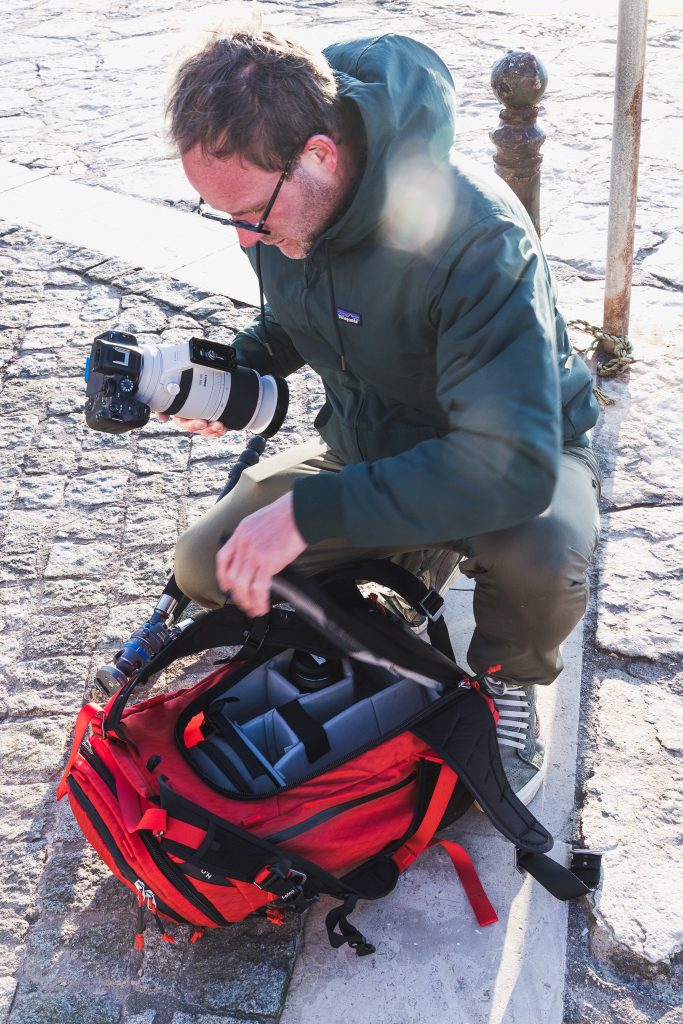
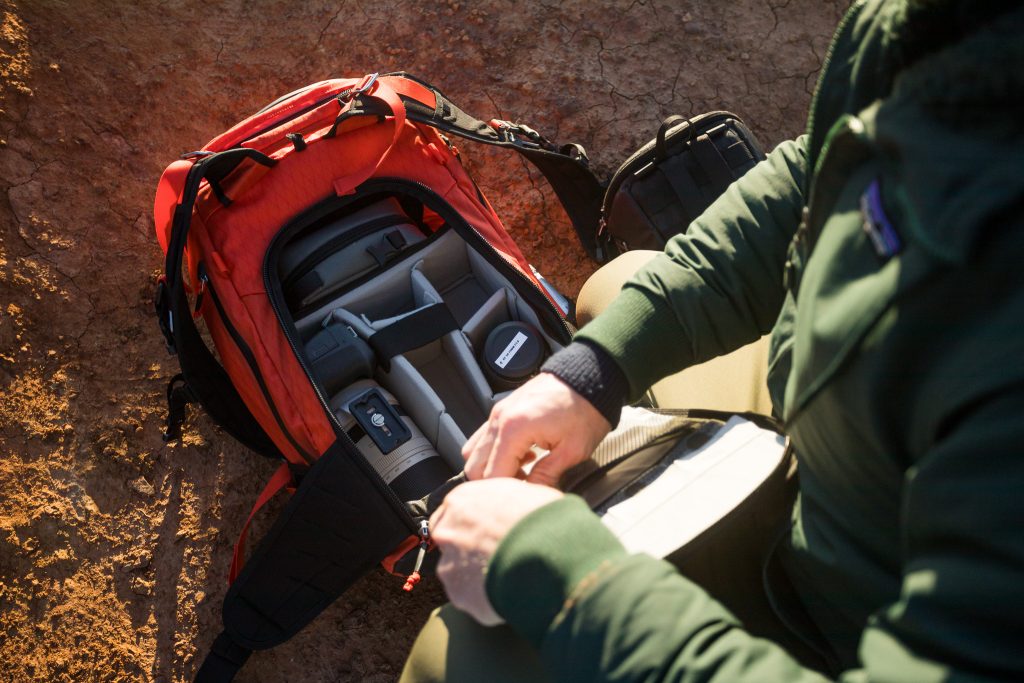

Alex's equipment consists of the Ajna 37 L DuraDiamond® (Magma Red) along with the Medium Slope Camera Insert.
He shoots with the Canon EOS R5 and R7 bodies, the Canon RF 15-35mm f2.8, Canon RF 24-70mm f2.8, Canon RF 100mm macro f2.8 and the Canon RF 100-500mm f4.5-7.1 lenses.
The additional gear he carries when needed includes his Binoculars for wildlife (vortex 10x42), a Drone (DJI Air 2s and DJI Air 3), and a tripod which is attached to the outside of the pack. For overnight trips, he uses an insulated mattress (thermarest Neoair Xtherm) and a sleeping bag. In our video, Alex has brought his travel kit, consisting of the Canon EOS R5 with the Canon RF 24-70mm and the Canon RF 15-35mm.
He uses the f-stop Filter Case with his K&F Filter kit ( ND and Graduated ND filters) and sees his Navin Pouch DuraDiamond® as a must-have for hiking.
Alex also uses the Tilopa 50L and occasionally the Sukha 70L along with his Pro Large Camera Insert. His main setup is the Pro Small Camera Insert or the Medium Slope - Camera Insert paired with either his Ajna 37L or his Tilopa 50L backpacks.
As a professional photographer for more than ten years, Alexandre has a taste for adventure and the great outdoors. In 2013, he left Paris for Australia, where he honed his skills as a photographer.
Seeking new challenges and adventure, he returned to Europe in 2016 by bicycle. He cycled 14000 km and travelled a further 8000 km, mostly on sailing boats, hitch-hiking from marinas and boat yards, to Vietnam where he ended his bike trip and trained to become a yoga teacher. He then travelled through France, Italy and Switzerland by van, before returning home.
He now teaches photography and explores the natural spaces of the Annecy region. His work has a refined style that often emanates a mystical ambience.

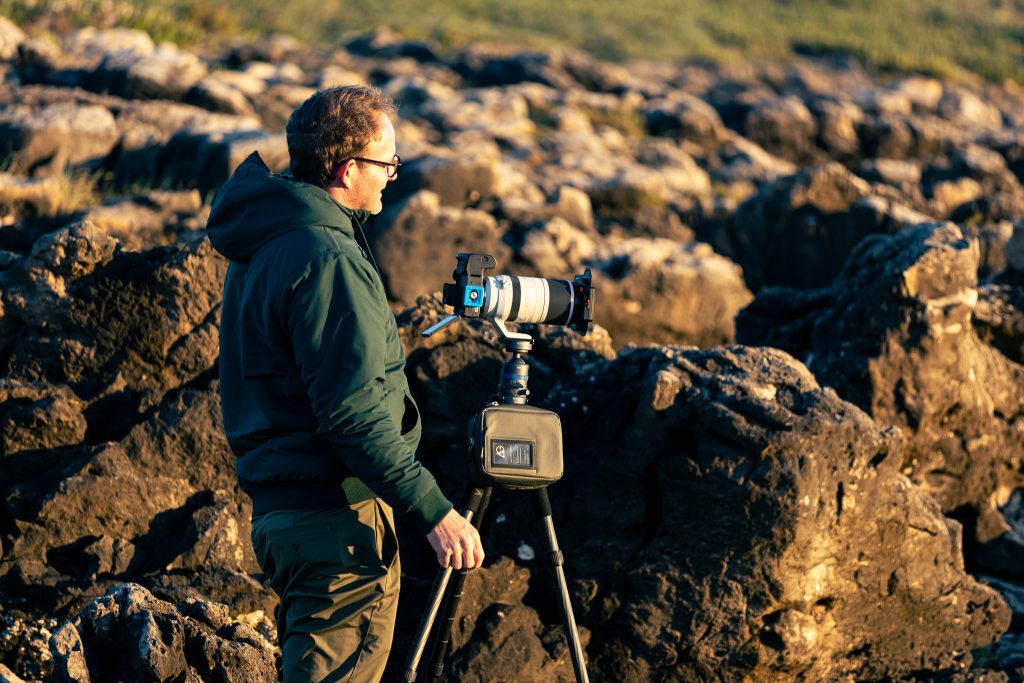


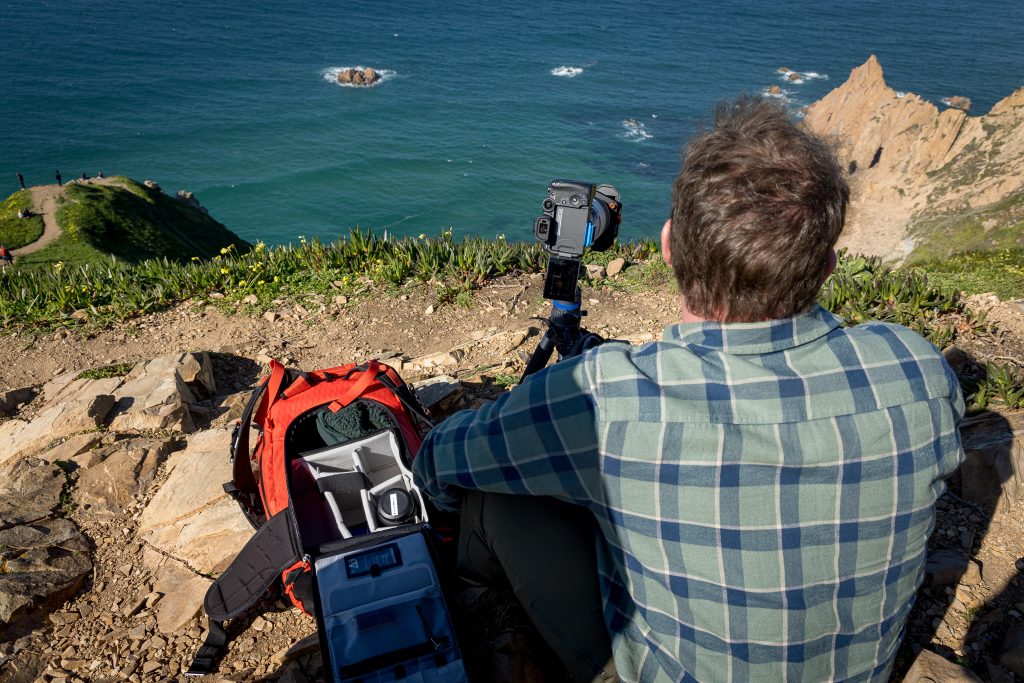


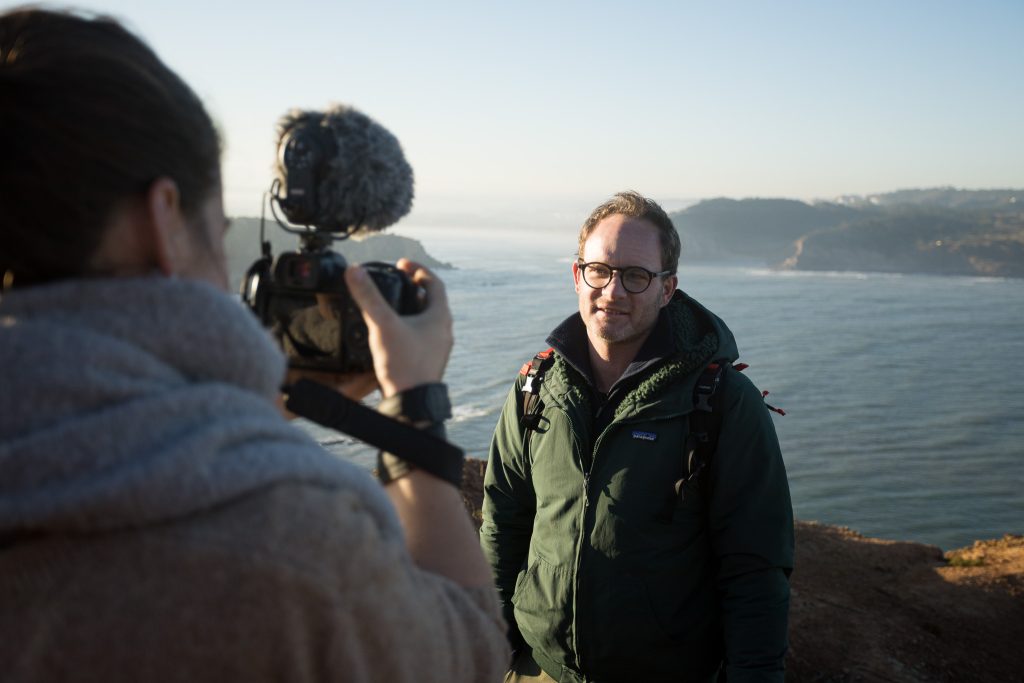

Everything is constantly moving and changing. When you are always transitioning from one assignment to the next, life can be hectic. Saving space, distributing weight, and planning ahead for a day in the field are all essential considerations when you are on the go. Join us as our Ambassadors share tips and tricks they have learned over years of traveling, with Life on the Dāsh.

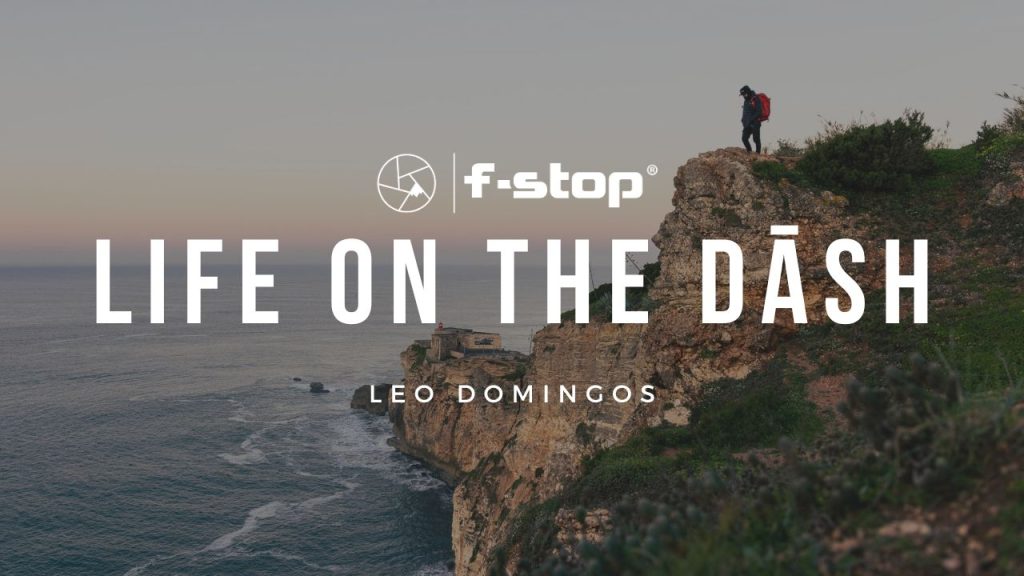



Discount Applied Successfully!
Your savings have been added to the cart.